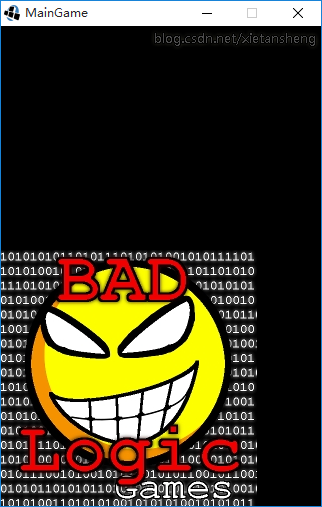本文链接: http://blog.csdn.net/xietansheng/article/details/50187111
1. 概述
舞台(Stage)是众多演员(Actor)“表演”的地方,可以看做是一个包含不同层次演员的 2D 场景,能够处理视口(整体缩放显示 / 屏幕适配)和 接收输入事件(触屏,鼠标点击,按键按下等)自己处理以及将事件分发给演员。
2. 舞台类(Stage)
舞台类中的部分方法:
- float getWidth(): 获取舞台的宽度
- float getHeight(): 获取舞台的高度
- void act(float delta): 更新舞台逻辑,并批处理舞台中的演员(自动逐个调用演员的 act() 方法更新演员逻辑)
- void draw(): 绘制舞台,并批处理舞台中的演员(自动逐个调用演员的 draw() 方法绘制演员)
- void dispose() : 释放舞台中的所有资源
- boolean addListener(EventListener listener): 添加事件监听到舞台
- boolean removeListener(EventListener listener): 移除监听器
- void addActor(Actor actor): 增加一个演员到舞台中
- void clear(): 移除舞台中的所有演员
Array<Actor>getActors(): 获取舞台中的所有演员- Group getRoot(): 获取舞台中维护所有演员的演员组
Group: 演员组,它也继承了 Actor,也是一个演员,舞台中维护了一个 Group 对象,添加到舞台中的演员其实最终添加到了 Group 中,舞台类中有增加演员的方法,但没有移除单个演员的方法,如果需要移除某个演员,需要调用 stage.getRoot() 方法先获取到舞台的 Group 对象,然后调用 Group 对象的 group.removeActor(actor) 方法。
3. 代码示例
这里引用前面章节中自定义的演员:
package com.libgdx.test;
import com.badlogic.gdx.graphics.g2d.Batch;
import com.badlogic.gdx.graphics.g2d.TextureRegion;
import com.badlogic.gdx.scenes.scene2d.Actor;
/**
* 自定义演员
*/
public class MyActor extends Actor {
private TextureRegion region;
public MyActor(TextureRegion region) {
super();
this.region = region;
setSize(this.region.getRegionWidth(), this.region.getRegionHeight());
}
public TextureRegion getRegion() {
return region;
}
public void setRegion(TextureRegion region) {
this.region = region;
setSize(this.region.getRegionWidth(), this.region.getRegionHeight());
}
@Override
public void act(float delta) {
super.act(delta);
}
@Override
public void draw(Batch batch, float parentAlpha) {
super.draw(batch, parentAlpha);
if (region == null || !isVisible()) {
return;
}
batch.draw(
region,
getX(), getY(),
getOriginX(), getOriginY(),
getWidth(), getHeight(),
getScaleX(), getScaleY(),
getRotation()
);
}
}
游戏主程序的启动入口类:
package com.libgdx.test;
import com.badlogic.gdx.ApplicationAdapter;
import com.badlogic.gdx.Gdx;
import com.badlogic.gdx.graphics.GL20;
import com.badlogic.gdx.graphics.Texture;
import com.badlogic.gdx.graphics.g2d.TextureRegion;
import com.badlogic.gdx.scenes.scene2d.Stage;
/**
* 游戏主程序的启动入口类
*/
public class MainGame extends ApplicationAdapter {
// 纹理
private Texture texture;
// 自定义的演员
private MyActor actor;
// 舞台
private Stage stage;
@Override
public void create() {
// 创建纹理, badlogic.jpg 图片的宽高为 256 * 256
texture = new Texture(Gdx.files.internal("badlogic.jpg"));
// 创建演员, 位置默认为为 (0, 0), 在舞台左下角
actor = new MyActor(new TextureRegion(texture));
// 使用默认的构造方法创建舞台, 宽高默认为屏幕宽高
stage = new Stage();
// 将 演员 添加到舞台中, 由舞台去更新演员的逻辑和绘制
stage.addActor(actor);
}
@Override
public void render() {
// 黑色清屏
Gdx.gl.glClearColor(0, 0, 0, 1);
Gdx.gl.glClear(GL20.GL_COLOR_BUFFER_BIT);
/*
* 舞台自己维护了纹理画布(SpriteBatch), 并且在绘制前后自动分别调用了 begin() 和 end() 方法,
* 所以渲染舞台时, 只需要调用舞台的 act() 和 draw() 方法即可
*/
// 更新舞台逻辑,并批处理舞台中的演员(自动逐个调用演员的 act() 方法更新演员逻辑)
stage.act();
// 绘制舞台,并批处理舞台中的演员(自动逐个调用演员的 draw() 方法绘制演员)
stage.draw();
}
@Override
public void dispose() {
// 释放纹理资源
if (texture != null) {
texture.dispose();
}
// 释放舞台资源
if (stage != null) {
stage.dispose();
}
}
}
运行结果:





 本文详细介绍了LibGDX中的舞台(Stage)概念及其使用方法。舞台是演员(Actor)进行交互的地方,能处理视口缩放和接收输入事件。文章通过具体代码示例展示了如何创建舞台和自定义演员,以及如何在舞台上更新和绘制演员。
本文详细介绍了LibGDX中的舞台(Stage)概念及其使用方法。舞台是演员(Actor)进行交互的地方,能处理视口缩放和接收输入事件。文章通过具体代码示例展示了如何创建舞台和自定义演员,以及如何在舞台上更新和绘制演员。



















 2050
2050

 被折叠的 条评论
为什么被折叠?
被折叠的 条评论
为什么被折叠?










